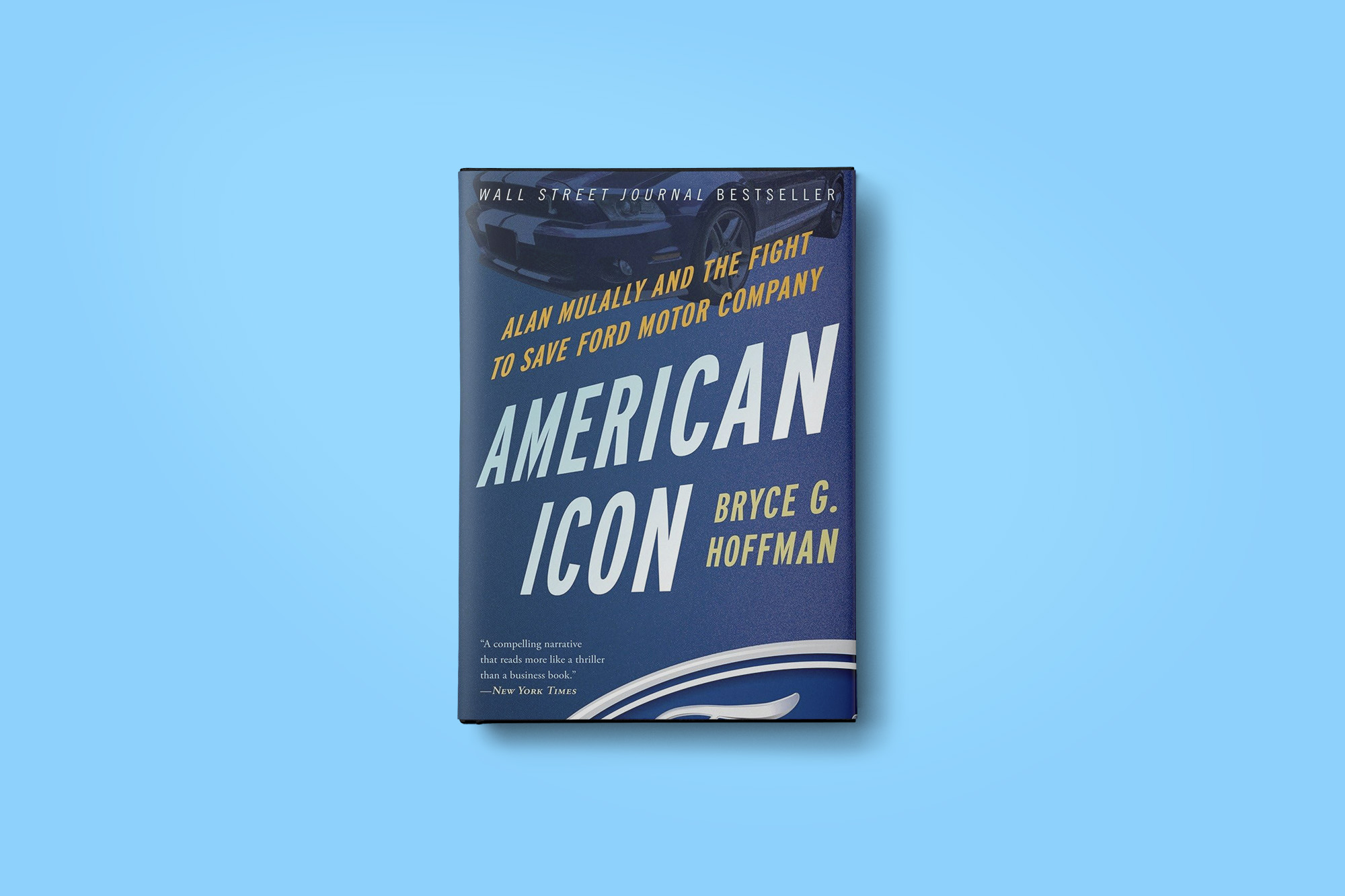
The book in a paragraph
American Icon: Alan Mulally and the Fight to Save Ford Motor Company by Bryce Hoffman chronicles the remarkable turnaround of Ford under the leadership of Alan Mulally during a period of financial crisis. The book delves into the profound leadership lessons derived from Alan’s transformative approach. Alan’s commitment to transparent communication, strategic vision, and crisis leadership stands out as he navigates Ford through challenging times. The narrative underscores the significance of fostering collaboration, breaking down silos and instilling a customer-centric innovation mindset. Through Alan’s journey, the book offers invaluable insights into the principles that revitalised Ford, emphasising the enduring impact of transparent, strategic and collaborative leadership on organisational success.
Summary of American Icon: Alan Mulally and the Fight to Save Ford Motor Company by Bryce Hoffman
American Icon: Alan Mulally and the Fight to Save Ford Motor Company by Bryce Hoffman is a gripping account of the leadership journey undertaken by Alan Mulally during a critical period in Ford’s history. Against the backdrop of the 2008 financial crisis, Alan’s strategic and transformative leadership played a pivotal role in steering Ford away from the brink of bankruptcy.
Crisis Leadership and Strategic Decision-Making
One of the primary leadership lessons from Alan’s tenure at Ford is his adept crisis management and strategic decision-making. Facing the severe impact of the financial crisis on the automotive industry, Alan took decisive action to secure Ford’s future. Rather than seeking a government bailout, as competitors General Motors and Chrysler did, Alan initiated a strategic restructuring plan called the “Way Forward.” This involved streamlining operations, cutting costs and focusing on core products. Alan’s refusal to mortgage Ford’s future and instead strategically reposition the company showcased the importance of resilient and forward-thinking leadership during times of crisis.
Transparent Communication and Open Culture
Alan’s leadership was characterised by a commitment to transparent communication and the creation of an open culture at Ford. Upon joining the company, he instituted weekly Business Plan Review (BPR) meetings where executives openly discussed their progress and challenges. This practice, initially met with skepticism, became a cornerstone of Ford’s revitalisation. The emphasis on honesty and openness fostered a collaborative environment, breaking down traditional organisational silos. By encouraging a culture of candour, Alan created a space where problems were addressed proactively and employees felt empowered to contribute to the company’s recovery.
One Ford Vision
Central to Alan’s leadership was the establishment of a clear and compelling vision for Ford – the “One Ford” vision. This entailed aligning the company’s global operations and unifying its diverse product portfolio. Alan understood the importance of a cohesive strategy to streamline operations and enhance efficiency. By consolidating platforms and models across regions, Ford was able to achieve economies of scale, reduce development costs and create a more cohesive brand identity. The vision became a rallying point for the entire organisation, illustrating the power of a unified strategic direction in achieving sustainable success.
Empowering a Customer-Centric Culture
Alan instilled a customer-centric mindset at Ford, emphasising the importance of understanding and meeting consumer needs. This approach marked a departure from the insular focus on internal metrics that had characterised the company’s culture. Alan pushed for a shift in perspective, urging executives to think about products from the customer’s point of view. This focus on the customer not only influenced product development but also shaped Ford’s marketing and branding strategies. The transformation towards a customer-centric culture demonstrated the relevance of aligning business strategies with the desires and expectations of the end consumer.
Collaboration and Team Building
Alan recognised the significance of collaboration and team building in achieving Ford’s revival. He assembled a strong executive team and prioritised collaboration over internal competition. This emphasis on teamwork was encapsulated in the notion of “working together always and ‘fighting’ together when needed”. Alan’s leadership style cultivated a sense of shared purpose among the workforce, encouraging employees to collaborate across departments and functions. The emphasis on unity and collective effort demonstrated the potency of a cohesive and collaborative organisational culture.
Conclusion
American Icon presents a compelling narrative of Alan Mulally’s leadership at Ford, emphasising the critical lessons gleaned from his tenure. Alan’s crisis leadership, commitment to transparent communication, strategic vision, customer-centric approach and emphasis on collaboration collectively serve as a roadmap for leaders navigating challenges in the dynamic business landscape. The book not only provides insights into the automotive industry’s tribulations but also offers a timeless leadership playbook applicable across diverse organisational contexts. Alan Mulally’s legacy at Ford stands as a testament to the transformative impact of visionary and principled leadership in times of adversity.
Where to next?
- Buy a copy of American Icon by Bryce Hoffman: AU • UK • US
- Download a free copy of our daily review template, which can link to a BPR style weekly review



